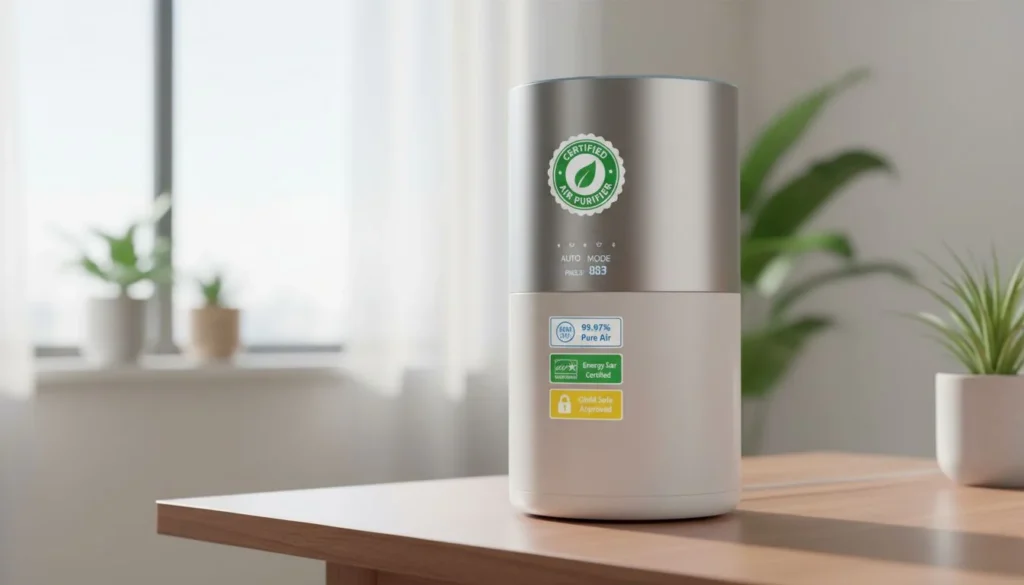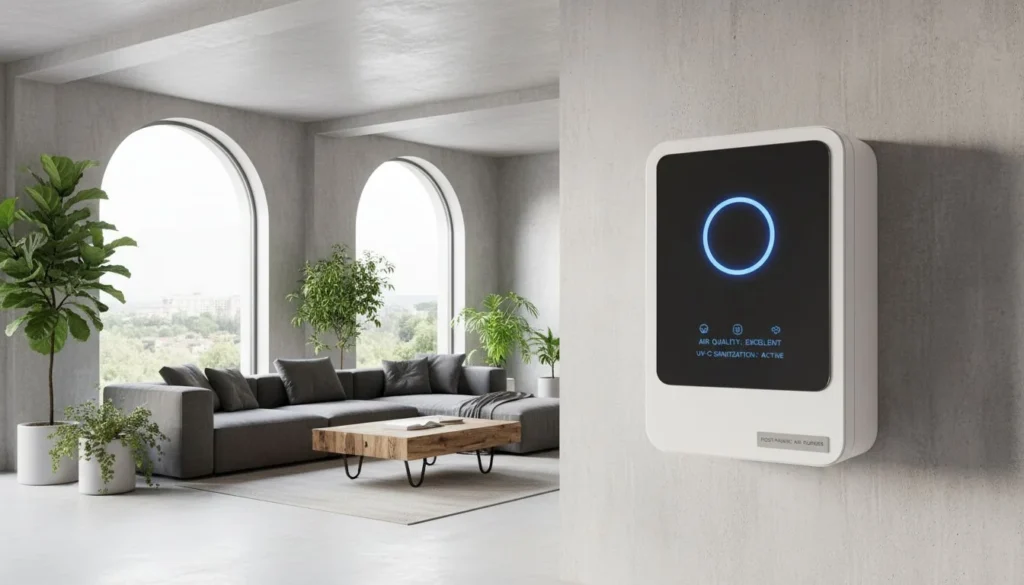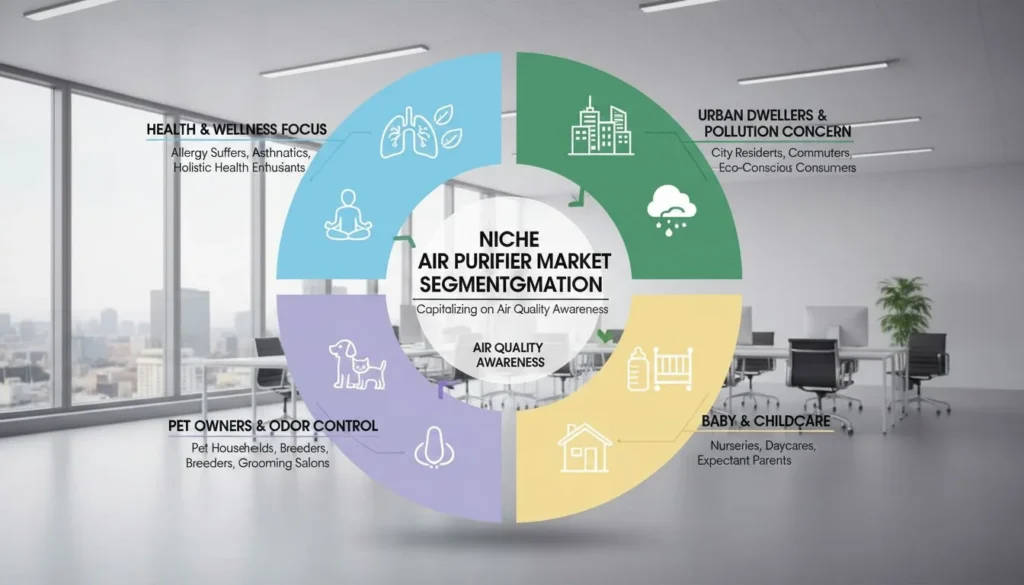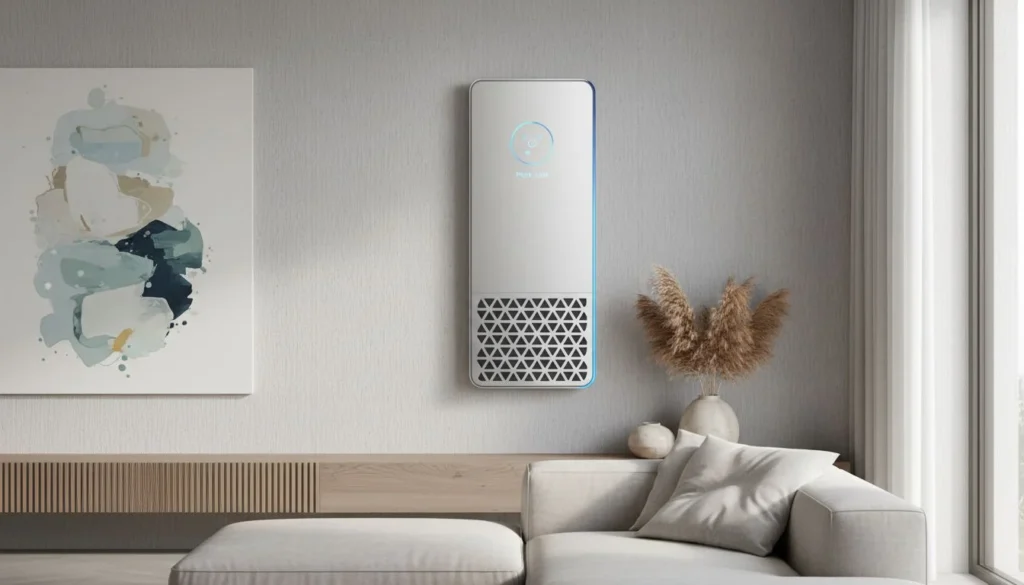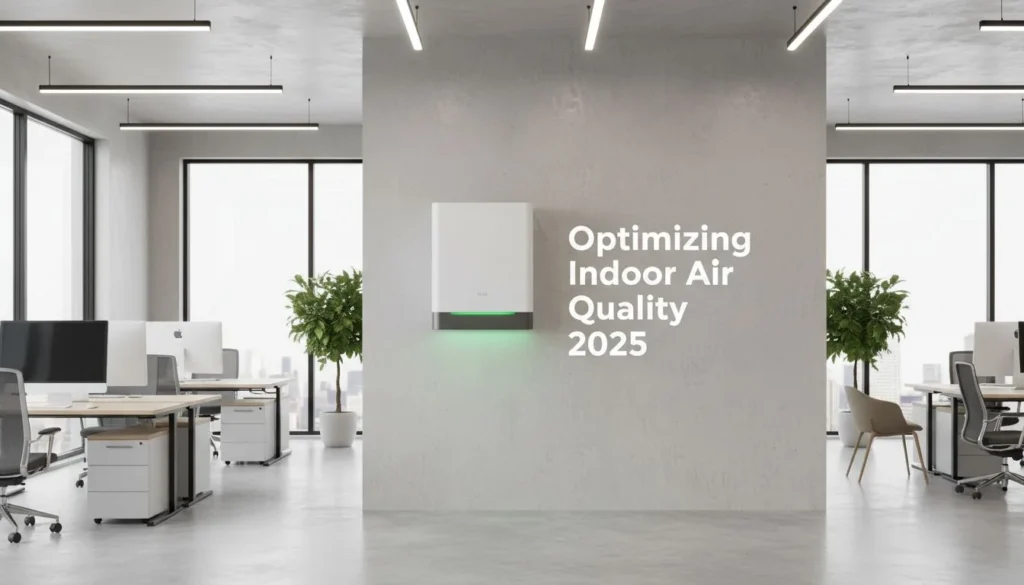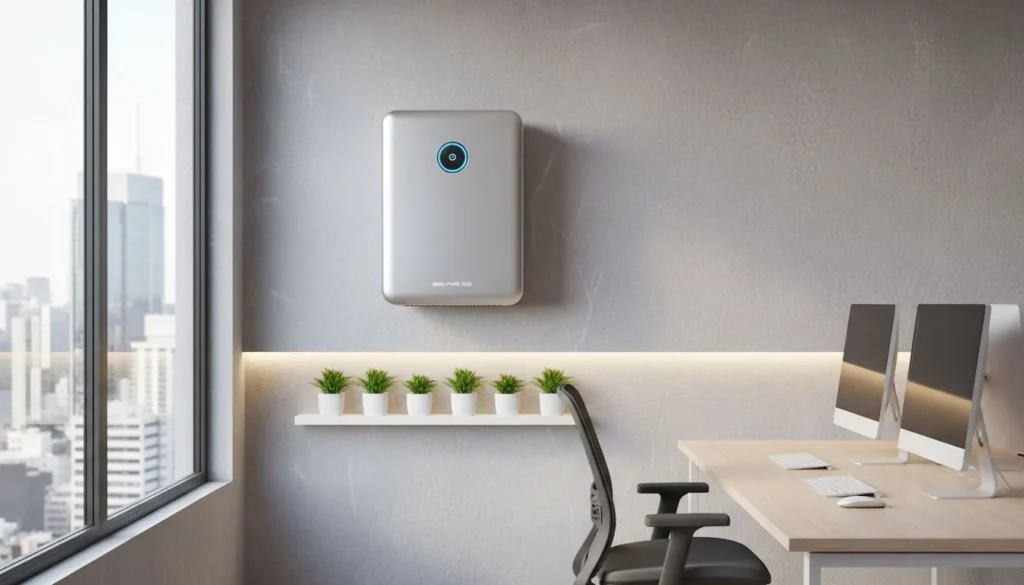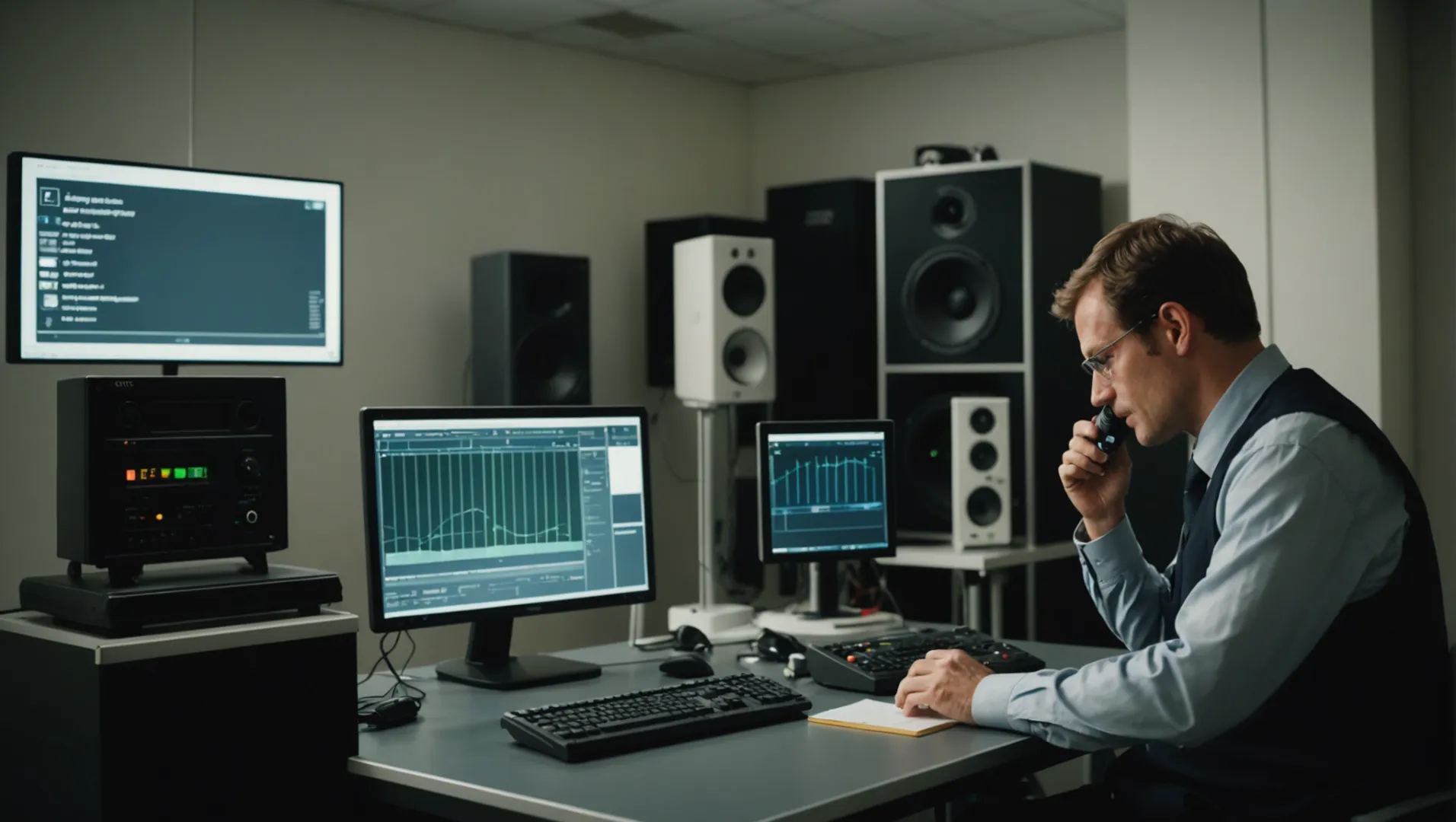
هل سئمت من الأجهزة المزعجة التي تزعجك من الضوضاء التي تصدرها الأجهزة؟ دعنا نتعمق في اختبار مستويات ضوضاء أجهزة تنقية الهواء معًا!
لاختبار مستويات الضوضاء في أجهزة تنقية الهواء بفعالية، استخدم غرفة اختبار ضوضاء احترافية لتجنب التداخل البيئي، والتمييز بين قياسات ضغط الصوت وقوة الصوت. يجب أن يتماشى الاختبار مع أداء جهاز تنقية الهواء للحصول على نتائج دقيقة.
في حين أن هذا المقتطف يوفر فهماً أساسياً، فإن تعقيدات اختبار الضوضاء واسعة. تعمّق أكثر في دليلنا المفصّل للتعرف على بيئات الاختبار الاحترافية وتقنيات القياس وكيفية الموازنة بين الأداء ومستويات الضوضاء لتحقيق أفضل وظيفة لجهاز تنقية الهواء.
تظل قوة الصوت ثابتة بغض النظر عن البيئة المحيطة.صحيح
تقيس قوة الصوت إجمالي الطاقة المنبعثة غير المتأثرة بالبيئة المحيطة.
ما هي الأدوات والمعدات المطلوبة لاختبار الضوضاء؟
قبل الشروع في إجراء اختبار الضوضاء لأجهزة تنقية الهواء، من الضروري امتلاك الأدوات والمعدات المناسبة.
تشمل الأدوات الأساسية لاختبار الضوضاء أجهزة قياس مستوى الصوت ومقاييس جرعات الضوضاء وأجهزة المعايرة وغرف عديمة الصدى. تساعد هذه الأدوات على ضمان قياسات دقيقة لضغط الصوت وقوة الصوت، وهي ضرورية لتقييم أداء أجهزة تنقية الهواء.
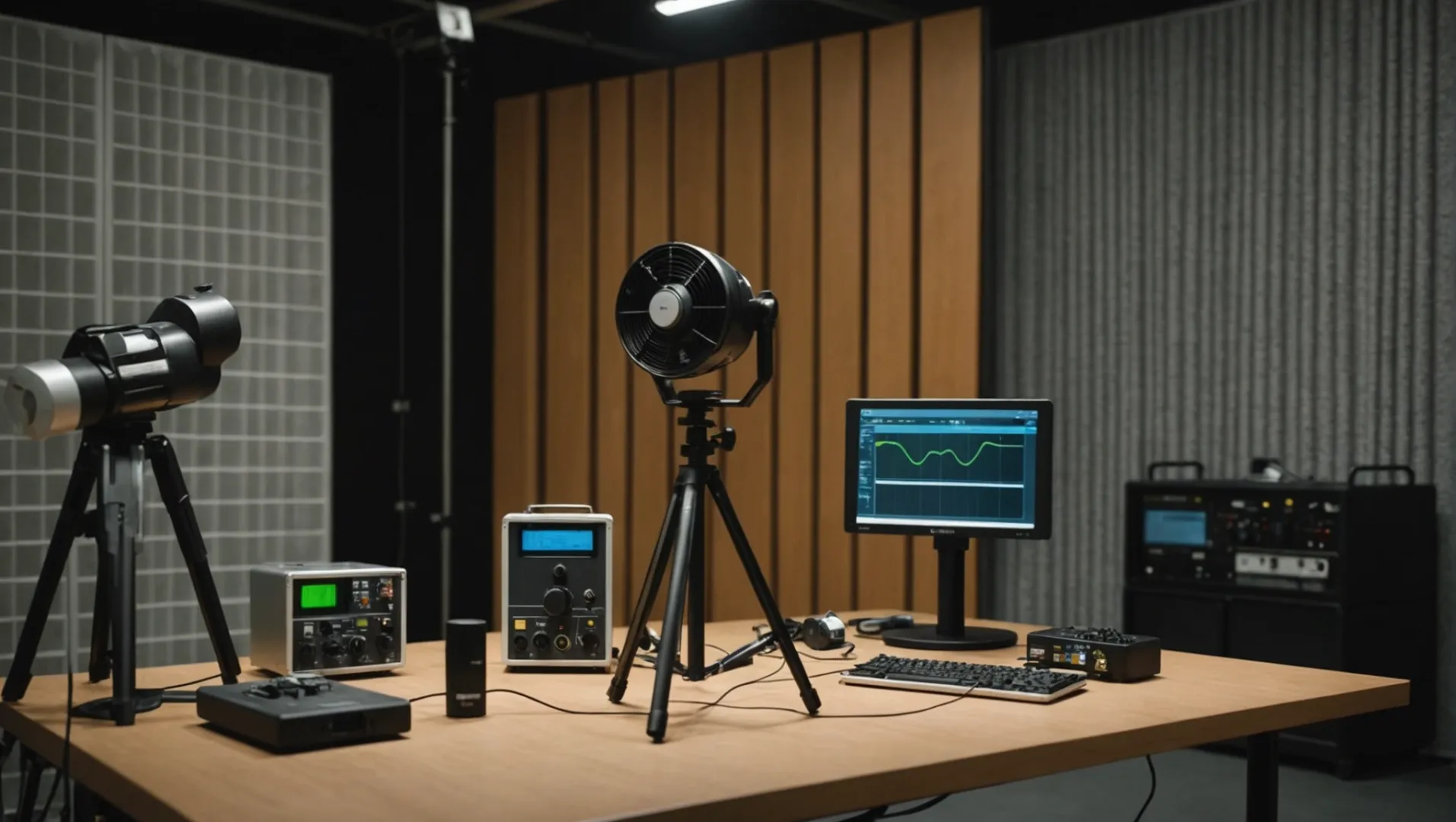
فهم أساسيات قياس الضوضاء
بدقة اختبار مستويات الضوضاء1 في أجهزة تنقية الهواء، هناك حاجة إلى العديد من الأدوات المتخصصة. وفيما يلي تفصيل للمعدات الأساسية:
- مقاييس مستوى الصوت: تُستخدم لقياس شدة الصوت بالديسيبل (ديسيبل). وهي ضرورية لفهم مستوى الضجيج الفوري الناتج عن جهاز تنقية الهواء.
- مقاييس جرعات الضوضاء: بينما تشبه أجهزة قياس مستوى الصوت، تُستخدم هذه الأجهزة على فترات أطول لتقييم متوسط التعرض للضوضاء. وهي مفيدة بشكل خاص في البيئات التي تتقلب فيها مستويات الضوضاء.
- أجهزة المعايرة: لضمان الدقة، يجب معايرة أجهزة قياس الصوت. يوفر جهاز المعايرة نغمة مرجعية، مما يسمح لك بضبط مقياس مستوى الصوت وفقًا لذلك.
- غرف عديمة الصدى: وهي غرف مصممة خصيصًا لامتصاص انعكاسات الصوت. وهي توفر بيئة محكومة لاختبار أكثر دقة من خلال التخلص من تداخل الضوضاء الخارجية.
ضغط الصوت مقابل قوة الصوت
عند قياس الضوضاء، من المهم التمييز بين ضغط الصوت وقوة الصوت:
- ضغط الصوت هو ما نسمعه ويُقاس باستخدام مقاييس مستوى الصوت. وهو التغير في الضغط المحلي الذي تسببه الموجات الصوتية.
- قوة الصوت، من ناحية أخرى، هي الطاقة المنبعثة من مصدر ما لكل وحدة زمنية وهي مقياس أكثر جوهرية لقدرة المصدر على توليد الصوت. وغالباً ما يُستخدم هذا المقياس في البيئات الصناعية من أجل الدقة.
في الممارسة العملية, قياسات قوة الصوت2 تتطلب إعدادات أكثر تطوراً مثل الغرف عديمة الصدى والاختبار متعدد النقاط لتحديد المظهر الصوتي الكامل لجهاز تنقية الهواء.
إجراءات الاختبار القياسية
يجب أن يلتزم اختبار الضوضاء بإجراءات موحدة لضمان اتساق النتائج وقابليتها للمقارنة. بالنسبة لأجهزة تنقية الهواء:
- اختبار النقاط التسع: تتضمن هذه الطريقة القياس من زوايا ومسافات مختلفة حول جهاز تنقية الهواء، وعادةً ما يكون ذلك على بعد متر واحد. تساعد هذه الطريقة في التقاط الصورة الكاملة لانبعاثات الضوضاء.
- الالتزام بالمعايير: استخدام المبادئ التوجيهية من هيئات مثل AHAM للسوق الأمريكية، والتي توفر بروتوكولات محددة للاختبار.
لا يؤدي فهم هذه الأدوات والطرق إلى تحسين دقة قياساتك فحسب، بل يساعدك أيضًا في تصميم أجهزة تنقية هواء أكثر هدوءًا وكفاءة.
تقيس مقاييس مستوى الصوت شدة الصوت بالديسيبل.صحيح
صُممت مقاييس مستوى الصوت لقياس شدة الصوت بالديسيبل (ديسيبل).
تعمل غرف عديمة الصدى على تضخيم الضوضاء الخارجية لإجراء اختبار دقيق.خطأ
تمتص الغرف عديمة الصدى الانعكاسات الصوتية، مما يزيل تداخل الضوضاء الخارجية.
كيف يختلف ضغط الصوت وقوة الصوت في القياسات؟
يعد فهم الفرق بين ضغط الصوت وقوة الصوت أمرًا بالغ الأهمية لإجراء اختبار دقيق لمستوى الضوضاء.
يقيس ضغط الصوت التغيّرات المحلية في ضغط الهواء الناجمة عن موجة صوتية، في حين أن القدرة الصوتية تقيس إجمالي الطاقة المنبعثة من مصدر ما. يمكن أن تتقلب مستويات ضغط الصوت بناءً على المسافة والبيئة، بينما تظل قوة الصوت ثابتة، مما يوفر مرجعًا أكثر استقرارًا لمقارنة المصادر المختلفة.

ضغط الصوت: التجربة المسموعة
غالبًا ما يكون ضغط الصوت هو ما نشير إليه عند مناقشة مدى ارتفاع صوت شيء ما بالنسبة لنا. وهو يقيس التقلبات في ضغط الهواء عند نقطة معينة ويتم التعبير عنه عادةً بالديسيبل (ديسيبل). إن مستوى ضغط الصوت3 (SPL) يتأثر بالمسافة من المصدر والظروف البيئية، مثل الجدران أو الأجسام التي قد تعكس الصوت أو تمتصه. هذا التباين يجعله مقياساً عملياً للمنتجات الاستهلاكية، لأنه يعكس ظروف الاستماع في العالم الحقيقي.
قوة الصوت: توقيع المصدر
من ناحية أخرى، تشير قوة الصوت إلى إجمالي كمية الطاقة الصوتية المنبعثة من مصدر ما، وتقاس بالواط. وعلى عكس ضغط الصوت، تظل قوة الصوت ثابتة بغض النظر عن البيئة المحيطة أو المسافة من المصدر. وهذا الاتساق يجعلها مقياسًا قيمًا للتطبيقات الصناعية حيث يكون التحكم الدقيق في انبعاثات الضوضاء أمرًا بالغ الأهمية.
التداعيات العملية لاختلافات القياس
في الأسواق الاستهلاكية، كما هو الحال مع أجهزة تنقية الهواء، غالبًا ما يتم استخدام قياسات ضغط الصوت نظرًا لارتباطها بتجربة المستخدم. ومع ذلك، لتصميم أجهزة تنقية هواء عالية الأداء بمستويات ضوضاء منخفضة، فإن فهم قياسات قوة الصوت4 أمر ضروري. على سبيل المثال، يمكن أن يؤدي تقليل خرج الطاقة الصوتية إلى جهاز أكثر هدوءًا بشكل عام، حتى لو اختلفت مستويات ضغط الصوت بناءً على الموضع داخل الغرفة.
| نوع القياس | الوحدات | المؤثرات | التطبيقات |
|---|---|---|---|
| ضغط الصوت | ديسيبل | المسافة، البيئة | المنتجات الاستهلاكية |
| قوة الصوت | واتس | لا يوجد | التصميم الصناعي |
اختيار القياس الصحيح
يعتمد الاختيار بين ضغط الصوت وقوة الصوت على تركيز التطبيق. إذا كان الهدف هو ضمان تجربة المستخدمين لبيئة هادئة، فإن التركيز على مستويات ضغط الصوت5 مفيدة. وعلى العكس من ذلك، بالنسبة للأغراض الهندسية التي تحتاج إلى ناتج ثابت، توفر قوة الصوت معيارًا أكثر موثوقية.
تُقاس قوة الصوت بالديسيبل (ديسيبل).خطأ
تُقاس قوة الصوت بالواط وليس بالديسيبل.
تختلف مستويات ضغط الصوت باختلاف المسافة من المصدر.صحيح
تؤثر المسافة على مستويات ضغط الصوت، مما يغير من مدى ارتفاع الصوت.
لماذا تعتبر غرفة اختبار الضوضاء الاحترافية مهمة؟
اكتشف لماذا تُعد غرفة اختبار الضوضاء الاحترافية ضرورية لإجراء تقييمات دقيقة لأجهزة تنقية الهواء.
تقلل غرفة اختبار الضوضاء الاحترافية من تداخل الضوضاء البيئية، مما يضمن قياسات دقيقة وموثوقة لمستويات ضوضاء أجهزة تنقية الهواء.
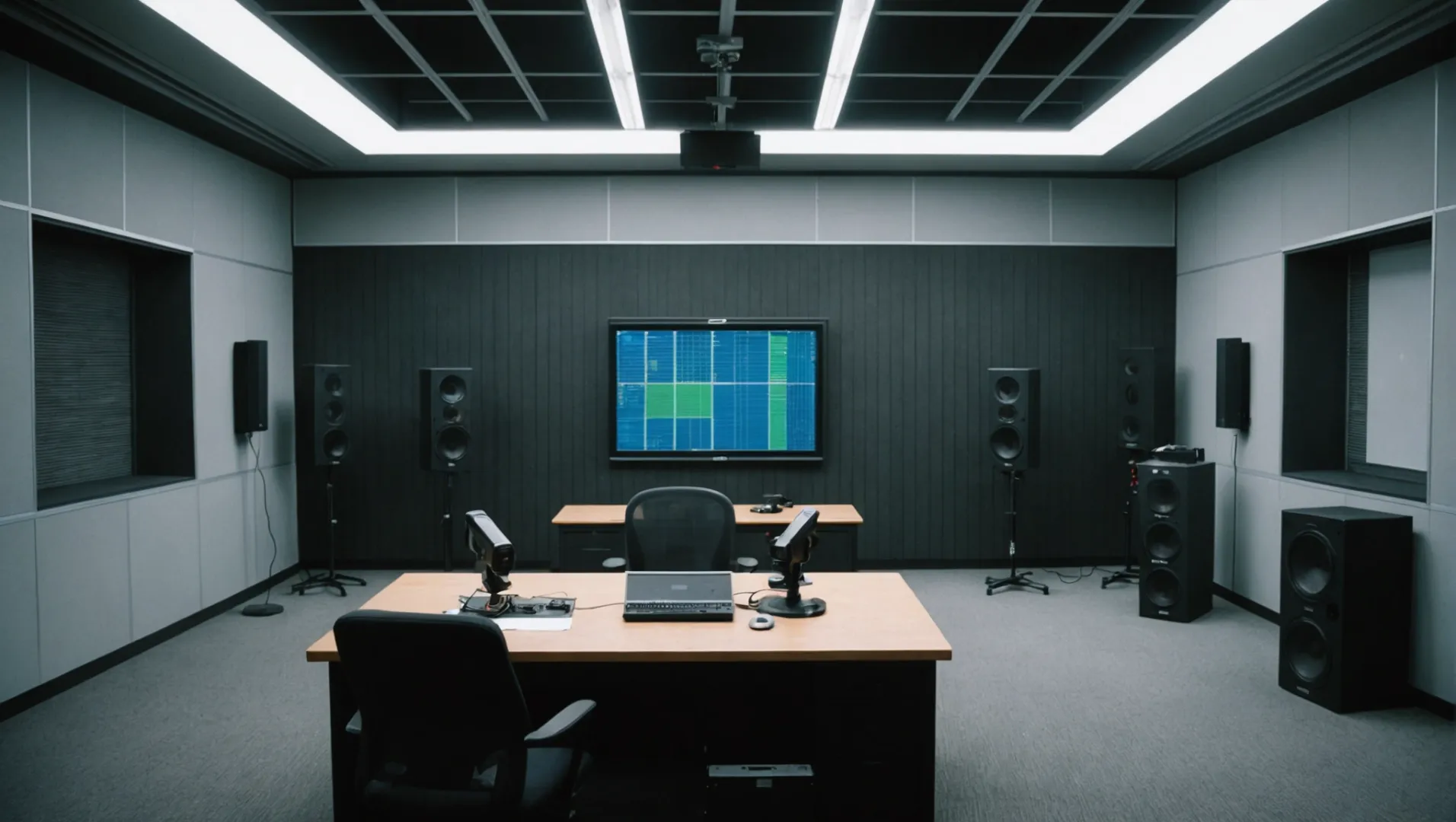
ضمان دقة القياسات
تُعد غرفة اختبار الضوضاء الاحترافية ضرورية لتحقيق نتائج دقيقة ومتسقة عند قياس مستويات الضوضاء لأجهزة تنقية الهواء. فبدون مثل هذه البيئة الخاضعة للرقابة، يمكن للضوضاء الخارجية أن تحرف القراءات بسهولة، مما يؤدي إلى تقييمات غير دقيقة لا تعكس أداء جهاز تنقية الهواء بشكل حقيقي. من خلال عزل الجهاز في غرفة متخصصة، يمكن للمختبرين التركيز فقط على الأصوات الصادرة عن جهاز تنقية الهواء نفسه.
التفريق بين ضغط الصوت وقوة الصوت
في مجال اختبار الضوضاء، من المهم التفريق بين ضغط الصوت وقوة الصوت. يمثل ضغط الصوت، الذي يُستخدم غالبًا في الأسواق الاستهلاكية، مستوى الصوت المسموع عند نقطة معينة ويمكن أن يختلف بناءً على البيئة. وعلى العكس من ذلك، تحدد قوة الصوت إجمالي الطاقة الصوتية المنبعثة من الجهاز، مما يوفر مقياسًا أكثر دقة مفضلًا في الإعدادات التجارية.
تتيح غرفة اختبار الضوضاء الاحترافية القياس الدقيق لكل من ضغط الصوت وقوة الصوت من خلال توفير بيئة مستقرة خالية من المؤثرات الخارجية. هذا الوضوح مهم بشكل خاص عند تصميم أجهزة تنقية الهواء عالية الأداء بأقل قدر من الضوضاء.
موازنة الأداء مع مستويات الضوضاء
يجب أن توازن أجهزة تنقية الهواء بين التشغيل الفعال ومستويات الضوضاء المقبولة. تسمح بيئة الاختبار الاحترافية للمصنعين بتقييم هذا التوازن بدقة من خلال استخدام تقنيات مثل اختبار متعدد النقاط6. ويتضمن ذلك أخذ القياسات من زوايا مختلفة حول الجهاز، مثل الأمام والخلف والجوانب والأعلى، وعادةً من مسافة متر واحد. يضمن هذا الاختبار الشامل ضبط مستويات الضوضاء دون المساس بأداء جهاز تنقية الهواء.
معايير الصناعة والامتثال
يعد الالتزام بمعايير الصناعة سببًا آخر يجعل غرفة اختبار الضوضاء الاحترافية أمرًا لا غنى عنه. توجه معايير مثل تلك الصادرة عن رابطة مصنعي الأجهزة المنزلية (AHAM) إجراءات الاختبار لضمان الاتساق بين المنتجات. تحدد هذه المعايير كيفية إجراء القياسات ومكان إجرائها، مما يجعل من الضروري للمصنعين الوصول إلى المرافق التي يمكنها تلبية هذه المتطلبات الصارمة.
باختصار، لا تقتصر غرفة اختبار الضوضاء الاحترافية على تحقيق ديسيبل منخفض فحسب؛ بل تتعلق بضمان أن أجهزة تنقية الهواء تقدم أفضل أداء لها مع الحفاظ على راحة المستخدم من خلال مستويات ضوضاء مقبولة. هذا التوازن أمر بالغ الأهمية في سوق اليوم التنافسي حيث يطلب المستهلكون كلاً من التشغيل الهادئ والتنقية الفعالة للهواء.
تقلل غرف اختبار الضوضاء الاحترافية من تداخل الضوضاء الخارجية.صحيح
صُممت هذه الغرف لتقليل الضوضاء البيئية إلى أدنى حد ممكن، مما يضمن دقة القياسات.
ضغط الصوت وقوة الصوت متطابقان في اختبار الضوضاء.خطأ
يختلف الضغط الصوتي باختلاف البيئة؛ وتقيس قوة الصوت إجمالي الطاقة الصوتية.
كيف يمكنك الموازنة بين الأداء والضوضاء في أجهزة تنقية الهواء؟
إن تحقيق التوازن بين الأداء والضوضاء في أجهزة تنقية الهواء أمر بالغ الأهمية لتحقيق الأداء الأمثل دون إزعاج.
لتحقيق التوازن بين الأداء والضوضاء في أجهزة تنقية الهواء، اختبر مستويات الضوضاء باستخدام قياسات قوة الصوت، مع مراعاة سرعة المروحة، واستخدام تقنية متقدمة لتشغيل أكثر هدوءًا.

فهم المفاضلة بين الأداء والضوضاء
تعمل أجهزة تنقية الهواء عن طريق تدوير الهواء من خلال مرشحات لإزالة الملوثات. وتعتمد فعالية هذه العملية إلى حد كبير على سرعة المروحة ونوع نظام الترشيح المستخدم. بشكل عام، تعمل سرعات المروحة الأعلى على تحسين أداء تنظيف الهواء ولكنها تزيد أيضًا من مستويات الضوضاء. لذلك، فإن تحقيق التوازن يتطلب تعديلات استراتيجية.
دور سرعة المروحة والتكنولوجيا
غالبًا ما تدمج الشركات المصنعة أدوات التحكم في السرعة المتغيرة، مما يسمح للمستخدمين بضبط سرعة المروحة وفقًا لاحتياجاتهم. قد تكون الإعدادات عالية الأداء مناسبة في أوقات ذروة التلوث، ولكنها قد تكون مزعجة. وعلى العكس من ذلك، قد يكون الإعداد المنخفض كافياً للاستخدام الليلي عندما يكون التشغيل الهادئ مفضلاً.
وقد أدت التطورات التكنولوجية الحديثة إلى تطوير مراوح ومحركات أكثر كفاءة تنتج ضوضاء أقل دون المساس بالأداء. تقنيات مثل أنظمة الترشيح HEPA7 ومرشحات الكربون المنشط مصممة لزيادة تنقية الهواء إلى أقصى حد مع تقليل الإخراج الصوتي.
استخدام قياسات قوة الصوت للتحكم في الضوضاء
عادةً ما تكون قياسات مستوى الطاقة الصوتية أكثر دقة من مستويات ضغط الصوت، خاصةً في البيئات التجارية والصناعية. ينطوي هذا النهج على تقييم الصوت المنبعث من جهاز تنقية الهواء نفسه بدلاً من الصوت الذي تدركه الأذن البشرية، والذي يمكن أن يختلف حسب العوامل البيئية.
يجب أن يتضمن اختبار الضوضاء الشامل القياس في نقاط متعددة حول جهاز تنقية الهواء - الأمامي والخلفي والجانبي والعلوي - عادةً على مسافة قياسية تبلغ مترًا واحدًا. وهذا يوفر صورة أوضح لملف الضوضاء عبر أوضاع التشغيل المختلفة.
| نوع القياس | الوصف | التطبيق |
|---|---|---|
| قوة الصوت | إجمالي الطاقة الصوتية المنبعثة | مفضل للتصميم والهندسة |
| ضغط الصوت | مستوى الضوضاء المدرك من قبل البشر | شائع في تقييمات المستهلكين |
تنفيذ ابتكارات التصميم
يمكن أن يساعد دمج ميزات التصميم مثل الأغلفة المعزولة والمواد الممتصة للصوت وشفرات المروحة الهوائية في تقليل الضوضاء. تشتمل بعض الطرازات المتقدمة على مستشعرات ذكية تقوم بضبط سرعة المروحة تلقائياً بناءً على جودة الهواء، مما يحافظ على التوازن بين الأداء والتشغيل الهادئ.
من خلال التركيز على هذه العناصر، يمكن للمصنعين إنشاء أجهزة تنقية هواء تلبي معايير الأداء العالية وتوقعات الضوضاء المنخفضة، مما يوفر للمستهلكين أفضل ما في الأمر.
تزيد سرعات المروحة الأعلى من ضجيج جهاز تنقية الهواء.صحيح
تعمل زيادة سرعة المروحة على تحسين تنظيف الهواء ولكنها ترفع مستويات الضوضاء.
تعمل فلاتر HEPA على تقليل الضوضاء في أجهزة تنقية الهواء.خطأ
تعمل مرشحات HEPA على تحسين التنقية ولكنها لا تقلل الضوضاء بشكل مباشر.
الخاتمة
يمكن لفهم اختبار الضوضاء أن يرشدك إلى جهاز تنقية الهواء المثالي الذي يوازن بين الكفاءة والهدوء.
-
اكتشف القوائم الشاملة للأدوات الضرورية لإجراء اختبار دقيق للضوضاء..: إن تقييم مستوى الضجيج الناتج عن جهاز تنقية الهواء أمر بالغ الأهمية. نحن نستخدم أداة متخصصة لقياس مستويات الضوضاء على مقياس ديسيبل واختبار كل جهاز لتنقية الهواء ... ↩
-
تعرّف على الاختلافات الرئيسية بين ضغط الصوت والقدرة: في حالة مستوى القدرة الصوتية، تكون القيمة المرجعية لمستوى القدرة الصوتية هي 10-12 وات بينما القيمة المرجعية لمستوى ضغط الصوت هي 2.10-5 باسكال. ↩
-
اكتشف كيف تؤثر مستويات ضغط الصوت على التجارب السمعية..: مستوى ضغط الصوت (SPL) هو مستوى ضغط الصوت، ويقاس بالديسيبل (ديسيبل). وهو يساوي 20 × لوغ 10 لنسبة جذر ... ↩
-
فهم أهمية قوة الصوت في تصميم المنتجات...: تشير الضوضاء الصناعية - والمعروفة أيضًا باسم التلوث الضوضائي الصناعي - إلى الصوت غير المرغوب فيه أو المفرط الناتج عن الأنشطة والعمليات الصناعية. ↩
-
تعرّف على تأثير مستوى الصوت المنخفض على تصورات المستهلكين: سيساعد تصنيف PNR هذا المستهلكين على فهم ومقارنة الضوضاء الصادرة عن المنتجات التي قد يرغبون في شرائها بشكل أفضل. ↩
-
تعرف لماذا يضمن الاختبار متعدد النقاط إجراء تقييم شامل لمستوى الضوضاء..: لاختبار فلتر الهواء الذي تصنعه بنفسك قررت طهي الوجبة نفسها أربع مرات وتشغيل المروحة على درجة عالية في اختبارين من الاختبارات. ↩
-
تعرف على كيفية موازنة أنظمة HEPA بين كفاءة التنقية وتقليل الضوضاء: HEPA هو نوع من مرشحات الهواء الميكانيكية المطوية. وهو اختصار لمصطلح [مرشح] هواء جسيمات عالي الكفاءة (كما هو معرّف رسمياً من قبل وزارة الطاقة الأمريكية). ↩


